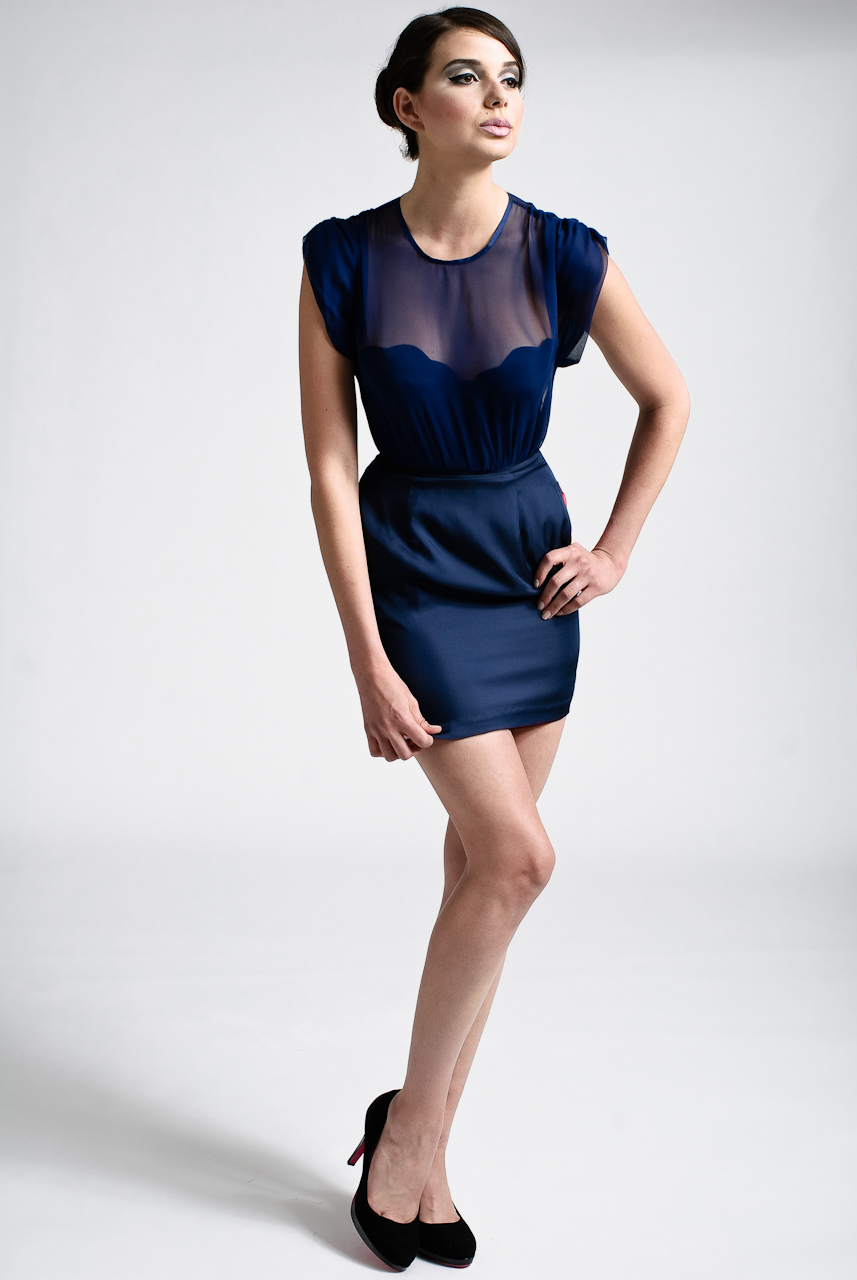
(courtesy of Chateau Davana)

The “Marie” and “Lena” dresses from UCLA alumna Diana Kohan’s clothing line, Château Davana. Kohan started the line in 2009 with David Tehrani, a fellow alumnus of the Fashion and Student Trends club. (courtesy of Chateau Davana)
Diana Kohan literally ditched studying for a final to watch a fashion show.
“I left my stuff in Kerckhoff during finals weeks and walked into Ackerman and I saw this insane runway show … with models and dresses and music and everything and I got really emotional,” Kohan said.
Disinterested in her psychology final, as well as school in general at the time, the UCLA alumna saw this fashion show put on by UCLA’s Fashion and Student Trends club as the catharsis for her decision to pursue fashion as a career.
Having grown up making her own clothes and taking sewing classes, Kohan was always interested in fashion, but didn’t think of it as a possible career path until she discovered the fashion club at UCLA. Kohan then spent the summer developing her portfolio and working on sketches to apply for FAST for her senior year and was showcased in the club’s annual fashion show.
“Diana’s clothes had a very specific aesthetic that we thought would really appeal to our viewers and women in general,” said Aimee Sorek, former president of FAST at UCLA. “It’s very classic, but with a fun and flirty edge.”
After joining FAST and showing her line for her senior year, Kohan and fellow FAST alumnus David Tehrani launched Château Davana in 2009, a fashion line made in Los Angeles.
Deriving the name of their line from the combination of both of their own names, the duo came up with “Château” as an ironic play on the luxury behind the word, considering that they do not even have an office. Kohan and Tehrani didn’t have connections to rely on to sell and publicize Château Davana to the public and decided to do it the old-fashioned way.
“Essentially we went to the L.A. Garment District and went door to door to every single garment sales representative who represent lines and showed our stuff. We got several offers and we picked the one that we felt was best for us,” Tehrani said.
With prices ranging from $160 to $300, Kohan and Tehrani adhered to a sophisticated silhouette inspired by classic styles and a departure away from the casual uniform of jeans and T-shirts.
“I get my inspiration from old Hollywood, 100 percent ““ from actresses like Sophia Loren and Audrey Hepburn,” Kohan said. “I just really love and appreciate the 1950s and 1960s era and how women would dress, and they were always so glamorous. I kind of want to bring that back in a modern way.”
With fashion boutiques wary of taking on new fashion lines in this unpredictable economy, the line had to rely on their own aesthetic rather than connections to sell in stores. Château Davana has captured the attention of boutiques such as Polkadots & Moonbeams in Los Angeles and Searle in New York, even selling dresses to clients all the way across the world in Dubai.
“I think not having too many connections was one setback, but it didn’t handicap us completely because the clothes spoke for themselves and that helped us break through a lot of red tape,” Tehrani said.
Tehrani said that the one person he hopes to see in Château Davana is Anna Wintour, the editor-in-chief of American Vogue, and hopes to expand the line into outerwear, shoes and perfume. For now, though, Kohan and Tehrani are still working out the kinks of building their brand and the work that goes into making a dress.
“I think the more obstacles there are, the more I realize how much I love it,” Kohan said. “For example, you have to go to a warehouse full of zillions of zippers and you have to find one with the right shade and the right brand and the right kind. While anyone else would go crazy looking for that one zipper, I just love it.”
